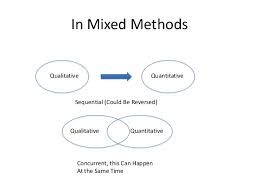
Assessing leadership activity and development in personal practice
Order Instructions:
Write a project report, reflecting on and assessing your leadership activity and the development of your personal practices/capacities.
Your report should be coherent and free-standing, so that it can be understood by an audience unfamiliar with your work for TMA 02 and your professional context. The report will be assessed by two or more markers, one of whom may be your tutor. You should therefore make clear what your professional context is and your own role, as well as the purpose, objectives and success criteria for your activity. Evidence in the appendix should be clearly referred to in the main text of the report – do not expect markers to search for supporting evidence that you have not mentioned in your report.
Your project report should be titled ‘A reflective report on the leadership of …’ and should be structured as follows.
Part 1 The activity – 700 words
Provide a brief explanation of the purpose, objectives and success criteria for your activity. Explain and justify the methods you used for collecting evidence. Any adjustments made to your plans (TMA 02) and the reasons for these should also be explained.
Part 2 Evaluation of the activity – 1400 words
Evaluate the extent to which you have been able to achieve the purpose and objectives of the activity in terms of:
a.contributing to organisational/sub-unit improvement or effectiveness
b.developing your own leadership practices and/or capacities.
Both (a) and (b) should be assessed in the light of your success criteria, providing evidence from the activity to support the conclusions you reach.
Part 3 Reflective analysis – 3500 words
Critically analyse the processes and outcomes of the activity, providing a reasoned explanation of what took place, and supporting your arguments with evidence from the activity. You should draw widely on relevant theoretical frameworks and concepts from the module. You should reflect on both organisational and personal processes and outcomes, including: your own leadership strategy and style; teamwork issues, organisational effectiveness and improvement; and the influence of organisational and external contextual factors on the activity and your leadership of it.
Part 4 Impact on thinking and practice – 1400 words
Critically assess the impact of (a) to (c) below on your leadership and management thinking and practice, and with respect to (d), the impact on your colleagues, and provide examples for each:
a.undertaking and reflecting on the leadership activity
b.taking part in the forum activities
c.engaging with other aspects of your work on E856
d.identifying how changes in your own thinking and practice have influenced other colleagues in your organisation.
Part 5
You must include your ‘Ethics checklist’ (revised if necessary) as well as a copy of your marked TMA 02 and its associated feedback form.
Guidance notes
You may choose to present Parts 1 to 2 of this assignment in note form. Parts 3 and 4, however, should be presented in continuous prose.
By the time you come to write this report, you should have completed your study of the module material.
Educational leadership is seldom a purely rational activity in which plans are adhered to and fulfilled. For the examinable component, you are not assessed on the leadership activity itself or on the achievement of the success criteria you set yourself, but on the quality of your reflective analysis and evaluation. This depends on your ability to conceptualize and apply theoretical perspectives in order to explain the congruence (or lack of it) between actual outcomes and intended outcomes, and to explore educational leadership and organisational improvement.
It will make no difference at all to your grade if your leadership activity was an abysmal failure or a stunning success in terms of achieving its personal and organisational objectives, provided that you have undertaken a thorough critical reflection and have demonstrated what you have learned from the experience (which should lead to future improvements in practice). It may well be the case that a leadership activity that is reported in glowing terms as a great success may not be as highly graded as one that takes a more critical stance. The whole point of reflective leadership practice is to improve by learning from experience. A detached and critical account is therefore expected.
SAMPLE ANSWER
Part I: The Activity
Schools have the responsibility of nurturing students and promoting their holistic development. The Ministry of Education Culture and schools as well as school heads, have in the recent past ignored the social function of schools. Schools have the obligation to familiarize their students about their culture and tradition. Promotion of humanist education is halted by insufficient school resources for students to engage in extra curriculum activities like arts exhibitions, football, among others and the fact that curriculums are exam oriented focusing on academic success. Students have limited time to engage in activities that allow them to share and learn about their cultures and traditions and this threatens erosion of these values. It is therefore, on this backdrop that I was selected to lead this project that will help the school fulfill its social role through reintroduction of Cypriot Folklore tradition to the students.
The purpose of my leadership activity is to help increase student knowledge and awareness concerning the Cypriot folklore tradition. I have the responsibility of leading a team of six teachers from different academic backgrounds to ensure successful implementation of the project.
Both organizational and personal objectives provided will guide achievement of the mentioned goals
Objective 1 (Organizational): To develop a ten page handbook covering the subject of folklore tradition. The handbook will have various sections including, gastronomy, fine arts, theatre, dance, and oral history. This preparation will take four week after which I will teach first years materials until the seventh week.
Success Criterion 1.1:
Ministry of Education and Culture will have to approve the handbook for use in classes
Evidence of Success 1.1:
Expert panel of the Ministry of Education and Culture letter of approval of use of the handbook
Success Criterion 1.2:
First year student will increase their knowledge on Cypriot Folklore tradition by 20%
Evidence of Success 1.2:
Use of two questionnaires before and after teaching and then comparison of these two
Objective 2 (Organizational): To organize a lecture about traditional pottery. A guest from the community will provide the lecture running to week eight.
Success criterion 2.1
Expects that more than 10 parents, 20 students and 10 members of staff will attend the guest lecture
Evidence of success 2.1
Oral feedback from attendees, and certificates that the guest lecturer will give to attendees after the lecture
Objective 3 (Organizational): To arrange for a photography contest on special tradition topic. This will run until week ten.
Success criterion 3.1
Expects more than 20 students to take part in the competition projects
Success criterion 3.2
Wining picture to have more than 200 likes on Facebook
Evidence of success 3.1 & 3.2
Student projects number and the magnitude of dissemination of the contest aim among students through social media
Objective 4 (Organizational): To recruit volunteers (Student) and prepare a festive that will bring together parents and students to enable them learn and experience folklore dancing, traditional food and pottery. This activity will run until week sixteen.
Success Criterion 4.1
At least 250 people including teachers , students and parents attending
Evidence of Success 4.1
Attendances will sign an attendance list at the entrance of the school
Success Criterion 4.2
At least 30 volunteers recruited
Evidence of Success 4.2
A list of student that took part in previous activities will be drafted and then requested to participate.
Success Criterion 4.3
Overall satisfaction rate as well as positive feedback on activities for promoting Cypriot Folklore tradition of parents and students more than 80 percentage
Evidence of Success 4.3
A questionnaire will be distributed to solicit views and opinions of the attendances and those that took part in the festival. This will help in providing insights and knowledge to support related activities in the future.
Objective 5 (personal): To develop my creativity, coordination and communication skills to accomplish goals and objectives of the project successfully.
Success Criterion 1.1:
Get positive appraisals by the school management regarding the overall activities
Evidence 1.1:
Headmaster written statement concerning post-evaluation of these activities
Success criteria:
Objective 6 (Personal): To assign tasks and responsibilities to various teams based on their talents and merit and maintain positive relationship with colleagues.
Success Criterion 1.1:
Five out of six team members believe that I have succeeded
Evidence 1.1:
Questionnaire results
Gathering of quantitative evidence was done through administration of questionnaires to students, teachers, and parents. I also kept learning journal all through this leadership activity. Measuring success criteria methods are based on based practices hence, valid and reliable in this activity. All activities are captured in the timelines in Annex 1
Adjustments made in TMA 02
- Success criteria on objective three were combined since they were related
Word count: 771
Part 2: Evaluation of the activity
The purpose of my leadership activity has on a large scale been met. The level of knowledge and awareness of students concerning their Cypriot folklore tradition has increased. The six teams that took part in implementation of this project as well gained skills and knowledge that have impacted on the school. Therefore, the purpose and objectives of the activity in terms of contributing to organizational effectiveness and in developing my own leadership practice and capabilities is evident even though, some areas require more attention to ensure that schools embrace these cultures and traditions.
Organisational Objective 1: The objective that was to create a handbook including five themes of the Cyprus tradition was successfully met. Success criterion 1.1 was met within the time frame. The handbook meets the standards. It was approved by the Ministry of Education and culture and this was evidenced with the approval letter.
Similarly, a success criterion 1.2 was also met. This objective was intended to increase student knowledge concerning their cultures and tradition by more than 20 percent. This was evidenced through questionnaires used to solicit students views and opinions about the subject. Comparison of these results demonstrated that indeed there was a positive change in terms of knowledge scope on their culture and tradition.
Prior to the study, there were some challenges that eventually were solved. The head of the school was happy for the creation of the handbook and expressed his confidence in increasing the knowledge of students on tradition and cultural issues. I also managed to coordinate with other people such as staffs and students to ensure that this document was successfully created. This was a learning process as well. Through effective communication skills, I managed to unite the parties and promote interactions and cooperation towards a common goal leading to this success.
Organisation Objective 2: this objective, which was on organizing for guest lecture on traditional pottery as a way of creating awareness and improving student interest in the same, was as well met. Planning was done well and invitations made on time. Success criterion 2.1 was met. The turnout of all the invited parties including members of staffs students and parents was superb.
Most of the people that attended the lecture expressed contentment. They learned the skills they did know. One of the parents stated that the project was very important in preserving their cultures and traditions. The headmaster as well was very happy with the presentation of the guest lecturer and expressed his gratitude.
Certificate of participations was a way to acknowledge and to appreciate those that attended the session. This gestures as well indicated organization and dedication of the school in promoting and fostering learning of culture and tradition.
Organisation Objective 3: the third objective was about organizing a voluntary contest that showcased scenes that relates to traditions, and was met. The success criterion 3.1 was therefore met. The turnout was very high and it surpassed the expected number. This exhibited good mobilization skills that are essential in promoting good leadership. Getting people to come together for an event require good planning and this is one of the attributes of good leadership
The second success criterion was also met. Many students use social media such as facebook. The fact that the number of likes on the wining picture surpassed the expected number of 200 was a clear indication of success of this initiative.
Through this contest, the school was able to accrue various benefits. The contests allowed learners to sharpen their research skills. They heard to research a specific topic of tradition and make photos, and then upload them on the facebook. This opportunity as well enabled the school to foster cohesion and unity.
Leadership competencies as well manifested through this contest. Communication and information sharing is important to foster good leadership. Through this, I developed my leadership skills, as I had to communicate with teachers and students. I had also to use appropriate channels of communication to ensure that stakeholders get information and attend the contest. This was manifest through the higher turnout of contestants and the stakeholders. Even though, the business communities did not turn out as expected, the letters send to them were appropriate channels of communication to reach them.
Organisational Objective 4: this objective that involved recruitment of student volunteers and inviting parents to celebrate traditional festival was as well successful and therefore was met. The Success Criterion 4.1 was met as the number of people that attended the festival were more than the target of 200 as exhibited in the attendance list. This was an indication that publicity that was done was successful. The success criterion 4.2 as well was met. The number of student volunteers was more than 30. They were prowess in different areas of tradition. Some were prowess and knowledgeable in traditional dances, food, myths, and legends while others in fine art.
A success criterion 4.3 was also met since the level of parents and students’ satisfaction was more than 80 percent. Many of the attendees were satisfied with the various presentations on the Cypriot Folklore tradition.
The success of this festival had impacts on both the organization effectiveness as well as on my leadership capabilities and practice. Many of the people that attended the festival received this information through lobbying. These are important skills that the school has acquired and will help them in the future to mobilize members of the community as well as parents. This objective as well impacted on my leadership practices. Organizing the festival and ensuring that process run smoothly as planned requires someone with good leadership skills. Documentation of the event was also very important during the festival. The school will use these documentations in future to make improvement on their approach to teaching about Cypriot Folklore tradition.
Objective 5 (Personal): showing positive attitude toward the team, being resourceful and dealing with personal and organizational problems has largely been met, yet I have learned more on my leadership capabilities. Success criterion 1.1 was highly met. The management of the school was very much appeased with my leadership in spearhead this project. As a prove of this, I received a statement about the contribution I had made in the school. Part of the statement read, “I am really inspired by your commitment and hard work in ensuring that this project success; you really have good leadership skills that have contributed to this success”. The statement further went on to read, “You have been a resource to this organization, we wish you all the best and may you continue to have this energy and positive attitude towards your team; This will take you place”. Involving others in the process and working cordially with the teams contributed to my success. Achieving the goals in the time provided was also an indication of good leadership attributes. Planning, organization, and controlling as well manifested in me during this period. Apart from the written statements from the headmaster of the school, I also received numerous recommendations, appraisals, and words of encouragement and appreciation from students and parents. One of the students said, “You have helped us to learn more about our rich culture and tradition. May God bless you”. Another parent said, “You have indeed helped us to value our culture and tradition; you have challenged us to think different and always take responsibilities”. One of the team members said. “You have an impeccable leadership qualities, I have enjoyed working with you and would always be ready if another opportunity is granted.”
This was as well a learning opportunity for me. Despite these appraisals, sometimes I experience communication breakdown. This was an opportunity for me to adjust my communication so that next time such challenges do not occur.
Objective 6 (Personal): delegating tasks and responsibilities to team members on basis of their merit and talent and at the same time maintaining positive relationship was also met. Out of the six team members five of them believe that I had succeeded in the roles I was assigned, more so when it came to assigning duties. One of them said, “You have shown good leadership in assigning tasks”. Many of them as well were optimistic that the leadership I exemplified was very important transforming the organizational leadership and spearheading its development.
Cases of complaint among the team members concerning their roles and duties were minimal and this was an indication of the fact that my leadership practices were not bad. The results of anonymous questionnaires that aimed at evaluating my role indicated positive results. Most of the feedbacks from the respondents approved my leadership capabilities for this project.
Words: 1443
Part 3 Reflective Analysis
Since the commencement of the module, the author has gained deeper understanding of educational theories and concepts, and even applied them to practical situations. These theories and concepts have as well provided insights on leadership and its impact. The author has taken advantage of the process to learn and develop his leadership capabilities and expand sphere of influence in fostering change and improving the quality of education in schools. This module has therefore, made the author concur with the assertion of Fullan (2007) as cited in the OT study guide that indeed change in education may seem technically simple but, in reality is a social complex.
When I was requested to take leadership of this project, I was concerned about the appropriate strategies and techniques to enable me achieve the set aims and objectives because of the incompatibility with the internal culture of the school. To ensure adoption of better strategies it was imperative for the author to carryout out SWOT (Strengths, Weaknesses, Opportunities, and threats analysis as well as PESTLE analysis, (political, economic, Sociological, Technological, legal and environmental analysis). This analysis enabled the author to understand both internal and external contextual factors likely to impact on planned leadership activity to guide my leadership strategy.
My leadership activity was impacted by technology as one of the external factor. In the OECD report, it is evident that technology continues to shape education as various form of information and communication technologies such as computers, mobile phones , internet continues to evolve (2013, p. 14). As a leader, I remained attentive to these changes in technology allowing students to vote through online platforms. I believe that social media such a facebook are highly utilized by the young people and using the same to in the cultural contest would give positive results. Indeed, the outcome of using facebook was astounding. I believe that it contributed to the outstanding turn out of participants at the event as well as in terms of votes.
Through this analysis, I find out various issues that pertained to my new role and therefore, had to adjust accordingly. One of the things I did is to overcome student indifference when asked to study new subject areas, especially in regards to tradition. Most of the students find learning about culture and tradition as something unnecessary and outdated. They believe that schools have a role in equipping them skills and knowledge to help them pass their exams. The focus in schools is on passing exams and therefore, embracing new areas such as culture and tradition becomes a problem and yet they are important in fostering humanistic development. Furthermore, comprehending the value of culture and traditions as part of their history has become difficult. This has been contributed by the society and the ministry of education that does not promote such study areas.
I also needed to address the aspect of negativity from my colleagues. Many of them do not see the benefit of teaching students’ about traditions and cultures as they strongly advice that the focus should be on curriculum. Therefore, such studies are not given the attention they deserve as most of the teachers concentrate on the various subjects in the curriculum such as literature, English, maths, science and physic among other. Participating in other extracurricular activities such as fine art is viewed as time wasting and extra burden hence, not undertaken. These internal contextual factors are major constraint towards achieving my objectives and aims. Furthermore, economic crisis has caused increased level of unemployment and has made it deficult for local society to experience budget deficits for promoting cultural activities.
Internal and contextual factors above posed a challenges but I had to find a way to overcome the same and ensure that the project succeeds. The first thing I did was to do away with colleagues teaching core lessons since they had no time with the co-curricular activities. I focused on those teachers that teach electives because they tend to be more flexible and have enough time at their discretion hence, would adjust their work plans to help in the implementation of the suggested activities. Furthermore, I resolved to narrow the target group as I implemented the planned activity amongst first year students only. The other students in other years however, would benefit from the activities indirectly through overall dissemination of the activity such as judging the photography contest and through participation and experiencing of the festival activities. The entire activities were to be open to all, as it uses contemporary tools/channels of conveying information such a social media. Furthermore, the activity promotes social interaction and creativity that will see all the students from other years get to participate.
Parents will get information and requests to participate and support these activities; this helped to increase the level of student participation in different activities. Because of their involvement, they acted as an encouragement and a motivation of the students to participate in these activities for them to understand and appreciate the values of social interaction as well as tradition and culture in the molding of civic character. I do as well believe that parents will seize this opportunity because they will get to meet their children and engage in fun together away from their everyday hassles and stress.
Leadership
Leadership is a broader concept that means different things across different people. My approach to leadership is aligned with the role of a leader as therapist defined in the therapeutic leadership discourse (Western 2008) and or as servant leadership (Greenleaf 1977).
Two criteria explain the reason why I decided to use therapeutic discourse to provide guidance in these activities. I do believe that ideas and values are closer to the discourse as opposed to what the literature is saying. Since I do not believe in the ontological approach , main values and hypothesis because of my inability to act upon, he controller role. I am a person who does not see my co-workers as cogs in machine and at the same time does not buy ideas of end justifying the means. I do not believe in unrealistic assumptions and dogmatic characters that messiah has the capabilities traits and character to run an entity alone in the long. I do believe that in an organization, ideas of all the parties are fundamental in transforming an organization. It is not possible to run a project solely and succeed. Therefore, it is on this backdrop that I involved team of six teachers to help me with the process of providing leadership to a chive the objectives and aims of the project.
Secondly, I do believe that therapist discourse is conducive and fits the context of school, the purpose, and aims of the activity, and the culture of the team. The context of school is based on values of collaboration and dialogue. The teachers in school must engage in dialogue on continuous basis to foster achievement of their objectives and aims. If this environment is lacking then, it becomes difficult to achieve the learning objectives. Therefore, the ad hoc role given to me, and lack of formal authority defines my tactics and actions. Since my position in the hierarchy was to remain intact even after the end of the activity, I had the responsibility to provide good leadership. I had therefore, the responsibility to convince my subordinates as opposed to coercing them to do various tasks (Greenleaf, 1997) in the quest to maintain positive relationship with all my colleagues. For the activity to succeed, my character has to be straight to enable me provide incentives to my co workers for them to get motivated and wok for extra hours voluntarily and without payment in quest t of promoting social role of the school. As a leader, I had to create a conducive climate based on mutual respect and open communication for the colleagues to remain supportive and dedicated towards achievement of the activity. Furthermore, I convened regular meetings to communicate my expectations, visions, and results expected, and the cooperation I wanted between the team members, and myself. These meetings were helpful as they helped the team to move in accord. They also enabled us to generate new ideas on how we could improve our activities so that they have positive impact o the learners as well as other people and stakeholders. During the meetings, as a leader, I did not delve on a detailed plan, but rather I described roadmap based on the objectives, aim, and then invited all the members to provide their views with their knowledge, skills, and creativity.
In general, the approach was aimed at fostering teamwork and through this arrangement; I aimed at maximizing team members’ commitment and motivating them to act as if they own the activity as well as the results. Furthermore, I emphasized to members the social expectation of a teacher in shaping the society though promotion of traditions, and knowledge dissemination reminding them that it was rewarding to care and give back to the society. Teachers are viewed as mirrors of the society, they are influential, and using them in this activity was important to aid in its success.
As a leader, I trusted my team members and this manifested through delegating of responsibility and accountability. This as well enabled them to experience personal growth and have a sense of recognition. Trust was achieved by as well listening to their ideas and worries and communicating decisions concerning the project. Remaining in touch with the teams was very important to create a better working conditions build on trust. Responsibility allowed them to remain committed towards the projects aims, and objectives. It is also a way of motivating employees. Maslow’s hierarchy of needs classified needs in five categories. Providing sense of belonging and self-esteem through teamwork and responsibility as well as recognition were important to motivate employees, and make them remain committed to the project goals.
Reading on various approaches that leaders employ to spear head change, I have come across three approaches considered dominant. One of them is rational approach that appreciates the fact that human being are logic and therefore, people will not resist change incase goals are well defined, are clear, and are agreed beforehand. According to Davies (2010), strategic planning is approaches of leaders to spearhead changes and this approaches argues that it is possible for leaders to define the desired outcomes and plan the process or steps they want to achieve or get them where they want. On the other hand, strategy is defined as a design that an individual adopts to achieve certain ends (Johnson, 2011).
On the other hand, social process approach views changes as a social instigated process and not as a calculated procedure. Therefore, this process focuses on the human factor as the key determinant of change. In change process, human beings play a key role. According to Johnson’s (2011) strategy as experience and Davies emergent strategy (2010) they argues that leaders decisions about change is based on trial and error mentality as well as past experiences. Leader that embraces change may have experienced a positive situation in their lives.
However, some that may be adamant in embracing change may as well have experienced negative impacts of change. Others embrace change without understanding whether the change will be positive or not, but just to try out their fate. The final approach is the complexity approach that alludes that the future is unknowable and unpredictable until it happens (Stacey 2010). Organizations are therefore sometimes forced to embrace change to- salvage themselves or to counter threats and to restore their security.
My view on change is therefore, not clear-cut to fit in one of the three approaches. I do believe that I have to plan the activities to engage in hence, a rational plan or a roadmap is important to provide confidence among the team members. Indeed, as the leader of this project, I understood the constraints and challenges and anticipated resistance if there was no clear and defined roadmap. I therefore, came up with a clear plan, a timeline to execute different tasks, assigned different team members tasks and provided clarity on the goals and the vision to pursue. This, I believe helped to reduce resistant to changes. The fact the many teachers concentrate on core lesson and seemed to have no time on fine arts was a threat through rational plan, it as easy to convince the teachers to join the bandwagon in promoting social learning of tradition and culture. Furthermore, a plan made the team members to view me as a leader with capabilities of providing a sustainable plan and a sense of direction. Furthermore, I embraced the social approach concepts as a leader spearheading this project. I believe that human beings are the determinant of change. Change is a social process and it takes place in society involving people. This understanding, informed my approach in this activity. I showed respect to all the people I came across and did not underrate any of them. I believed that they had the power to resist change and therefore, I had the responsibility of making them part of the change. I also anticipated uncertainty and did not know whether the project will succeed to the level I anticipated because of the constraints. Therefore, to some extend my experience as well as trial and error dynamics played during this process of providing leadership
I also focused on improving the social interaction with the team. This was to ensure that I gain trust so that they could buy my vision and help me achieve the same. The internal school context as well makes Kottler’s model one of the leading and suitable models to spearhead change. I therefore do concur with Kottler (1995) that if more people are involved or take part in a change initiative the outcomes are likely to be better and vice versa. I therefore embraced the model and focused on the major aspects including, individual empowerment, communication, encouragement to engage and shape and development s of a sense of ownership of the change (Kotler, 1996). I ensured that communication was open. I engaged with my team members on frequent basis to get update on the progress of various activities. These meetings as well helped us to come up with new ideas and innovations to improve the activities. Sense of ownership as well helped to increase the level of confidence and trust among team members. They therefore, remained dedicated and committed to the project. The team leaders and the participants were also empowered through assignment of responsibilities. For instance, the learners had to research for information on the tradition and culture and showcase. They felt empowered and therefore, this contributed to achievement of the objective and aims of the project. This as well made them to feel that they owned the change and it was time they embraced and placed more emphasis and supported these traditions and values.
The leadership strategy adopted was also motivated by the change and desires to see changes in society. It is reflected in Hope Hailey 2008 and adapted from Balogun and is cited in the OU study for quite a number of years. The root of the style is to use transformational change that can bring tremendous shifts in the organization as well as the people involved. Even though, this leadership was small scale, it aimed at transforming the culture of the schools. The school has to embrace change and ensure that it teaches learners on traditional and culture because this contributes to their development. It also makes learners remain aware of their history and culture hence, can protect the same and pass the same to the future generations. Team members will remain a source of inspiration and motivation to the school in the coming years. The transformation will as well continue to be experienced in future; through this project, learners, and the school will continue to nurture their traditions and culture.
In my leadership activity, I also used Davies and Davies strategic leadership approaches that focuses on strategic intent. The assumptions held by Davies and Davies is that during an attempt by schools to build a major cultural and organizational change they develop capacity to achieve positive performance. This performance is build based on the series of strategic intents (Davies& Davies, 2010). As a leader of this project, I had to define the outcomes for the school through the team to discover appropriate ways that the school would achieve the same. As the leader, I can vehemently report that the team I worked with was committed and dedicated to support this change, something that contributed to the success.
According to Goleman, (1995), leaders can apply emotional intelligence in their leadership depending on the situations. I was conscious to apply different leadership styles depending on the situation throughout the leadership activity provided I accomplished the mission and the aims and objectives. Fullan as cited in the work of Held & McKimm holds the view that effective leaders need to use different styles of leadership at different periods and that the more styles that the leader is able to draw from, the higher the chances of achieving success (2009, p. 54). Therefore, I do concur with the Hickman’s perspective about leadership and that is the reason I used a range of leadership components to spearhead and accomplish organization change that the members of the school wants achieved (2010, p. 80). I do believe that, using a single style of leadership would not have achieved the success I recorded. For instance, from the questionnaires administered to parents and students and teachers, the level of satisfaction on the contests and festival was satisfactory. This satisfaction was attained because of applying various styles of leadership. I had to ensure that members of the team and the students take part in the process. I used teamwork effectively and ensured that I provide a sense of direction on the goals and aims and visions of the organization.
The concept of distributed leadership as defined by Spillane (2006), refers to leadership that is ‘stretched over’ hence, it touches any people. Therefore, though the change team, I was aiming to stretch leadership over to other players such as these team members, teachers, support staffs, and students (Spillane, 2009). Moos (2010) argues that distributed leadership requires consensus (p. 29) while Harris as cited in Moss (2010) argues that this leadership style is a key vehicle for schools to help them change their approach of doing things. It enables schools to move from top-down approach of leadership to a more participative approach and more from a formal structure to a community based approach (p. 34). As a leader, I involved all the stakeholders and gave them equal opportunity to take part in the leadership activity. For instance, invited parents, students in other years of studies apart from first years, members of staffs as well as members of business fraternity took part.
The three specific purpose of leadership that Mayrowetz (2008) proposes including distributed leadership for efficiency and effectiveness, for democracy and for human capacity building applied to my situation as the leader of this project. I ensured that there was democracy in selecting team members as well as in selecting students to participate in the contest. I also ensured effectiveness and efficiency in my leadership by subjecting our activities to scrutiny. Respondents and parents had to give their views and opinions concerning the activity. Furthermore, I had to adhere to the codes of ethics. I also received management review concerning my conduct and performance as leader of the activity the drawback or ratehr pitfall of Mayyrowetz’s (2008) study is failure to recognize the fact that distributed leadership only provides a description of normal human activity when people gather with a common purpose they have the discretion to determine the way they wish to act.
In my leadership approach, I also put into consideration the issue of power, especially in the school. I was given the role to head the project, and yet there were other people that felt that they were more qualified than me. Therefore, being the leader , I had to create a conducive environment by empowering team members, teachers and students to remain steadfast in their activity for the common good. Sarason as cited in the studies of Hinde (20040, as well elaborates on challenges of power when providing leadership. similarly, Thompson & Saunders (2010) points out that externally initiated change staffs requires support to be seen as active agents of change in the organization. Therefore, it was very important for me as a leader to involve everyone in this leadership activity to win his or her support and even get them participate in the various events as well as in the drafting of the handbook on the traditions and culture.
There is no doubt that to concepts, and theories about leadership studied links the previous units have contributed to in-depth gain and understanding of various insights in my leadership. I am confident in my leadership capabilities courtesy of this leadership activity.
Word: 3508
Part 4 Impact on thinking and practice
It is no doubt that indeed E865 has greatly impacted on my development to becoming a more reflective, thoughtful and effective leader. The management thinking, leadership and practice has been impacted through E865. I must admit that my drive to become the best professional has been reignited and I can say without contradiction that my potential has been unlocked that will have positive impact on my educational transformation.
- Undertaking and reflecting on the leadership activity
Participating in this leadership activity has provided insights that have made me to discover a lot of things about leadership and, even helping me identify the kind of leader I am. It has as well deepened my understanding about leadership styles as well as own moral purpose.
Many people may not understand the kind of leaders they are made of. Through this leadership activity, I managed to keep a journal that has enabled me to reflect upon my leadership styles and abilities. I just knew that education major purpose is to impact knowledge and improve academic performance of learners. This was but a misconception that was unraveled through this leadership activity. Education is key in raising the personal and social potential of learners. Through education, learners get multifaceted skills, knowledge, and experience that help them to spearhead transformational changes in different areas. Furthermore, through this leadership activity, I have come to learn that students have a wealth of knowledge and are able to teach others. Students furthermore, are agents of change as they are able to execute their roles and responsibilities for their own destiny and learning as well as can play a critical role in improving education in the society. I have always come to know that my moral purpose is not just in me but is something that I have thought about it, and understand it. As Begley (2010) postulates, my moral purpose came in handy in aiding the way I made decisions and carried out my strategic planning. A good example to illustrate this was the way I selected my team members. The process was free and fair and this reduced any conflicts among the teachers.
I have as well come to understand that leadership styles might change depending on the situation. Situational leadership is therefore, very important style for any leader to ensure that operations and challenges that present in organization are solved amicably. I therefore, was able to improve in my leadership because I recognized the value of adjusting ones leadership during different occasions. Some time I was required to adopt participative leadership style while other democratic among many others to ensure that systems operated smoothly.
Leadership activity has all well impacted my leadership and management practice and thinking by deepening my understanding of leadership styles. Leaders may manifest various leadership styles in their leadership. Through this leadership activity, I have learned that I lean towards transformational leaderships, evidenced by my quest and motivation for the schools and students learn tradition and cultures to help in their human development. I believe that achieving highly requires involve others hence, why I adopted distributing leadership to empower all the people in the school to achieve the goals and objectives. I also think about the future and ways I can contribute in improving the lives of people.
The concept of emotional intelligence is very important for any leader. Leaders should be receptive to the needs and feelings of their followers when they provide leadership. Attributes such as sensibility, and empathy must be espoused in a leader. I do believe these to be some of the attributes that contributed to my success as a project leader. My colleagues praised and congratulated me for being receptive and behaving maturely. Many of them liked my leadership styles.
I also learned the need of leaders to provide motivation to the subordinates. People are not machines. They require a sense of belongingness, to be recognized and appreciated. I actually achieved this through my words of encouragement to the team members and appreciating their contribution. This made them to remain committed to the project. Some of the weakness that I will however, need to improve on is on communication; I will have to take time to understand the suitable communication channels to use in different circumstances. This will help to improve my leadership success level.
- Taking part in the forum activities
I have also engaged in other forums such as adoption of online platforms that have to some extent impacted on my leadership activity. Creating a handbook required me as a leader to source information from multiple sources, and one of the sources was from online. This platform therefore, helped to expand my knowledge scope on the issues concerning tradition and culture as well as my leadership competencies. As a leader, it is important to use multiple sources of information to promote learning. I recommended students to use internet to research and as well to vote for the best photograph on facebook. This to me was appropriate and demonstration of good leadership- being receptive of the changing lifestyles and aligning the leadership strategy to the same. As a leader, I learned that teachers must understand that learning platforms continue to change and is imperative that they remain aware of such changes.
- Engaging in other aspects of E856
Have identified two areas that have greatly impacted on my leadership and management thinking and practice. These are opportunity granted to share and discuss my progress with the tutor and the wide research on the reading materials provided.
I have been in constant communication with my tutor discussing about my progress. The lecturer has provided me with valuable information and advice that has impacted my level of understanding about the topic of leadership well. Through face-to-face and Skype, we have communicated and shared a lot. I do appreciate your time.
Through this sharing, I have come to learn of my good presentation skills. I am also creative and can become a good educators since I am not obstructed with external factors and can widen my sphere of influence as supported by Thomlinson (2010). This is in contrast to MacBeath’s (2008) view that leaders in education are not outgoing and therefore, they do not identify opportunities to maneuver and influence external environment.
Through expansive reading and research, I have as well gained more valuable information about leadership in education and the challenges that leaders go through. Various studies have addressed different aspects concerning educational leadership that have helped expand my scope of thinking and leadership (Hargreaves and Shirley, 2010, p. 286).
- My influence on other colleagues in my organization
Change happens as we learn and experience different issues in our life. I must say that changes in my thinking and practice have influenced the perception of teachers about extra- curricular more so tradition and culture. Teachers in the school have began to change their negative perceptions about traditional and culture because of this project.
I have also seen the impact of my leadership styles on the students. They have adopted participative and collaborative leadership styles even as they lead other students. Students and even other people learn from observing what others do or behave. I am elevated that I was a source of inspiration and a role model to many students and colleagues. They have actually replicated the skills, knowledge, and experience they gained from this leadership activity in other areas of leadership.
I have also been able to impact people through adjusting and improving in my communication. I have impacted and touched many people and helped them develop self-esteem. Some of the colleagues had low self-esteem and self-confidence. They did not believe in themselves. Through this leadership activity, they get encouraged and learned about their potential and capability as well as how to improve on their self confidence.
Even as I conclude, I must attest to the fact that E856 has given me an opportunity that is rare to come by. The oasis of knowledge, skills, and experience courtesy of E856 is unimaginable. I have learned a lot, more so on value of reflection and self-awareness. Various concepts and theories of leadership have widened my scope of knowledge. They have given my insight to analyse my own styles of leadership making me become aware of whom I am. I have become aware of the strengths and weaknesses I have. I as well have become, reflective, thoughtful, and effective leader that is aware of himself, and about the future.
Words: 1417
Part 5: Ethics Checklist
Leadership Activity: Ethics Checklist
| Your Name: Sylvana Stylianou Your PI: Ray Chatwin
Your Project Title:TMA02_B6884098
|
Yes | Does not apply |
| 1. Does your proposed activity need initial clearance from a ‘gatekeeper’ (e.g. Local Authority, head teacher, college head, nursery/playgroup manager)? | ✓ | |
| 2. Have you checked whether the educational setting requires you to undertake a ‘police’ check before carrying out your activity? | ✓ | |
| 3. Have you indicated how informed consent will be obtained from your participants (including children less than 16 years old, school pupils and immediate family members)?Your consent letters/forms must inform participants that they have the right to withdraw from the activity at any time. | ✓ | |
| 4. Does your proposed design involve repetitive observation of participants, (i.e. more than twice over a period of more than 2-3 weeks)? Is this necessary? If it is, have you made appropriate provision for participants to renew consent or withdraw from the activity half-way through? | ✓ | |
| 5. Are you proposing to collect video and/or audio data? If so have you indicated how you will protect participants’ anonymity and confidentiality and how you will store the data? | ✓ | |
| – Does your proposal indicate how you will give your participants the opportunity to access the outcomes of your activity (including audio/visual materials) after they have provided data? | ✓ | |
| 7. Have you built in time for a pilot study to make sure that any task materials you propose to use are age appropriate and that they are unlikely to cause offence to any of your participants? | ✓ | |
| 8. Is your activity likely to involve discussion of sensitive topics (e.g. adult/child relationships, peer relationships, discussions about personal teaching styles, ability levels of individual children and/or adults)? Have you put safeguards in place to protect participants’ confidentiality? | ✓ | |
| 1. Consider whether your proposed activity raise any issues of personal safety for yourself or other persons involved in the project. Do you need to carry out a ‘risk analysis’ and/or discuss this with teachers, parents and other adults involved in the activity? | ✓ |
Annex 1: Timeline
References list
Begley, P. (2010) ‘Leading with moral purpose: the place of ethics’ in Preedy, M. Bennett, N & Wise, C (eds) ‘Educational Leadership Context, Strategy & Collaboration’. Open University & Sage.
Davies, B., Davies, B.J. (2010) ‘The Nature and Dimensions of Strategic Leadership’ in Preedy M. et al, (ed.) Educational Leadership: Context, Strategy and Collaboration, London, Sage, pp. 83-95
Denis, J-L. et al. (2010) ‘The practice of leadership in the messy world of organisations’, in Preedy, M. Bennett, N & Wise, C (eds) ‘Educational Leadership Context, Strategy & Collaboration’. Open University & Sage.
Fullan, M, & Langworthy, M. (2013). Towards a New End: New Pedagogies for Deep Learning. Collaborative Impact.
Goleman, D. (1995) Emotional Intelligence: Why it Can Matter More Than IQ, London, Bloomsbury.
Greenleaf, R.K. (1977), Servant Leadership: A Journey into the Nature of Legitimate Power and Greatness, Paulist Press, New York, NY.
Hargreaves, A. and Shirley, D. (2009) ‘The fourth way’ in Preedy, M. Bennett, N & Wise, C (eds) ‘Educational Leadership Context, Strategy & Collaboration’. Open University & Sage.
Held, S. and McKimm, J. (2009) ‘Emotional intelligence, emotional labour and affective leadership’ in Preedy, M. Bennett, N & Wise, C (eds) ‘Educational Leadership Context, Strategy & Collaboration’. Open University & Sage..
Hickman, G. (2010) ‘Concepts of leadership in organizational change’, in Preedy, M. Bennett, N & Wise, C (eds) ‘Educational Leadership Context, Strategy & Collaboration’. Open University & Sage.
Hoyle, E. and Wallace, M. (2005) Educational Leadership: Ambiguity, Professionals and Managerialism, London, Sage.
Johnson, G., Whittington, R. and Scholes, K. (2011) ‘The Strategic Lenses’ in Preedy M. et al, (ed.) Educational Leadership: Context, Strategy and Collaboration, London, Sage, pp. 96-114
Kotter, J. (1995) “Leading Change: Why Transformation Efforts Fail”, Harvard Business Review, pp 59-67. [Online]. Available at http://www.sykehusapoteket.no/Upload/Topplederprogrammet/Litteratur/2.1%20Leading %20Change%20-%20Why%20Transformation%20Efforts%20Fail%20by%20JP%20Kotter.pdf (Accessed 24February 2015).
Kotter, J. (1996) Leading Change, Boston, Harvard Business School Press.
MacBeath, J. (2008) ‘Stories of compliance and subversion in a prescriptive policy environment’, in Preedy, M. Bennett, N & Wise, C (eds) ‘Educational Leadership Context, Strategy & Collaboration’. Open University & Sage.
Mayrowetz, D. (2008) Making Sense of Distributed Leadership: Exploring the Multiple Usages of the Concept in the Field. Educational Administration Quarterly Vol. 44, No. 3
Moos, L (2010) ‘From successful school leadership towards distributed leadership’, in Preedy, M. Bennett, N & Wise, C (eds) ‘Educational Leadership Context, Strategy & Collaboration’. Open University & Sage.
OECD (2013) ‘Trends Shaping Education’
Spillane, J. et al. (2009) ‘Reframing the role of organizations in policy implentation’, in Preedy, M. Bennett, N & Wise, C (eds) ‘Educational Leadership Context, Strategy & Collaboration’. Open University & Sage.
Spillane, J. (2006) Distributed Leadership, San Francisco, Jossey-Bass.
Stacey, R. (2010) “Complexity and Organizational Reality”, 2nd edn, London, Routledge.
Thompson, P. (2011) ‘Coming to Terms with Voice’ in Wise, C. Bradshaw, P. and Cartwright, M. (eds) ‘Leading Professional Practice in Education’. Open University & Sage.
Thomson, P. and Sanders, E. (2010) ‘Creativity and whole school change’, Journal of Educational Change. vol. 11, no. 1, pp. 63–83.
Wallace, M. and Thomlinson, M. (2010) ‘Contextualizing leader dynamics: how public service leaders endeavour to build influence, in Preedy, M. Bennett, N & Wise, C (eds) ‘Educational Leadership Context, Strategy & Collaboration’. Open University & Sage.
Western, S. (2008) ‘An overview of the leadership discourses’ in Preedy M. et al, (ed.) Educational Leadership: Context, Strategy and Collaboration, London, Sage, pp. 11-24
We can write this or a similar paper for you! Simply fill the order form!












